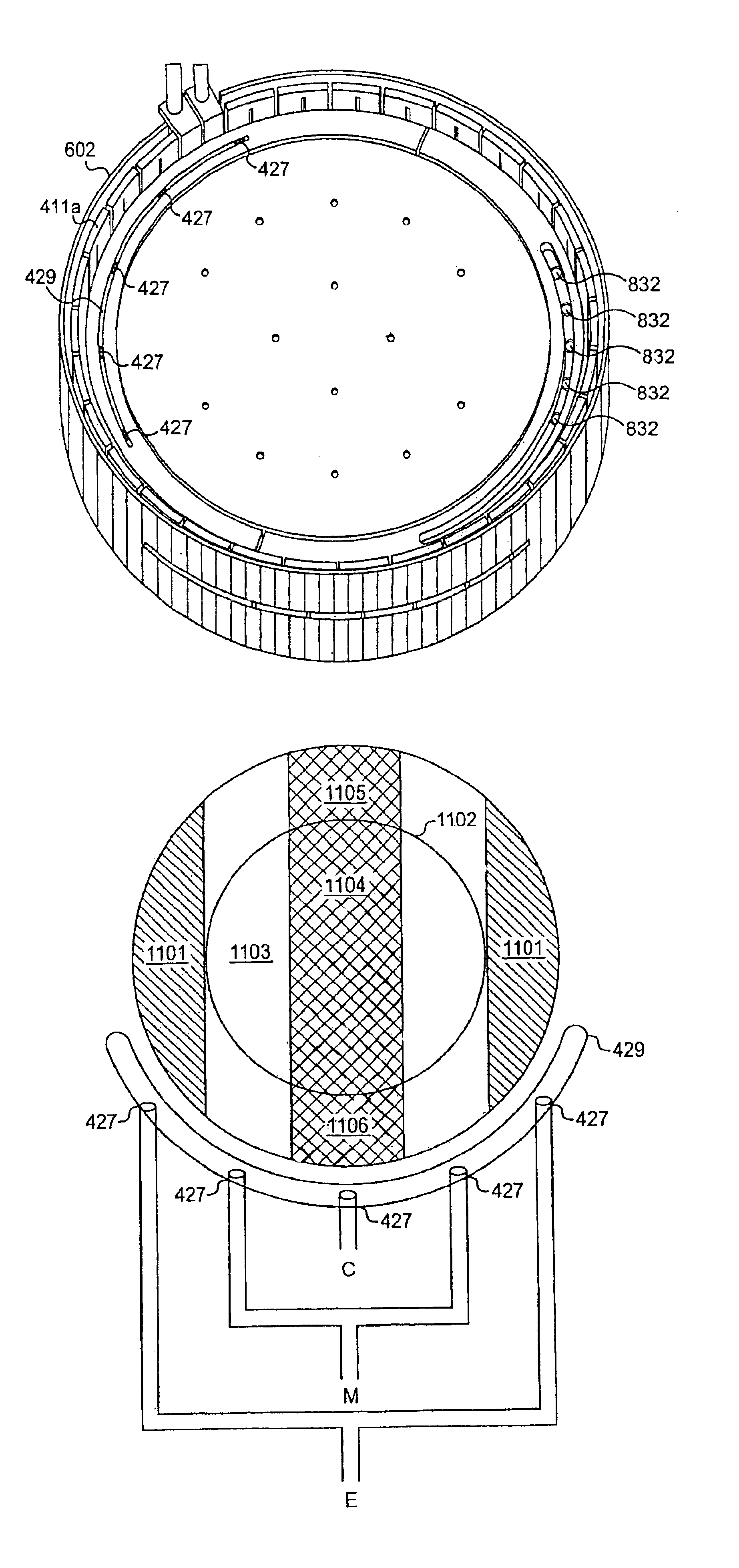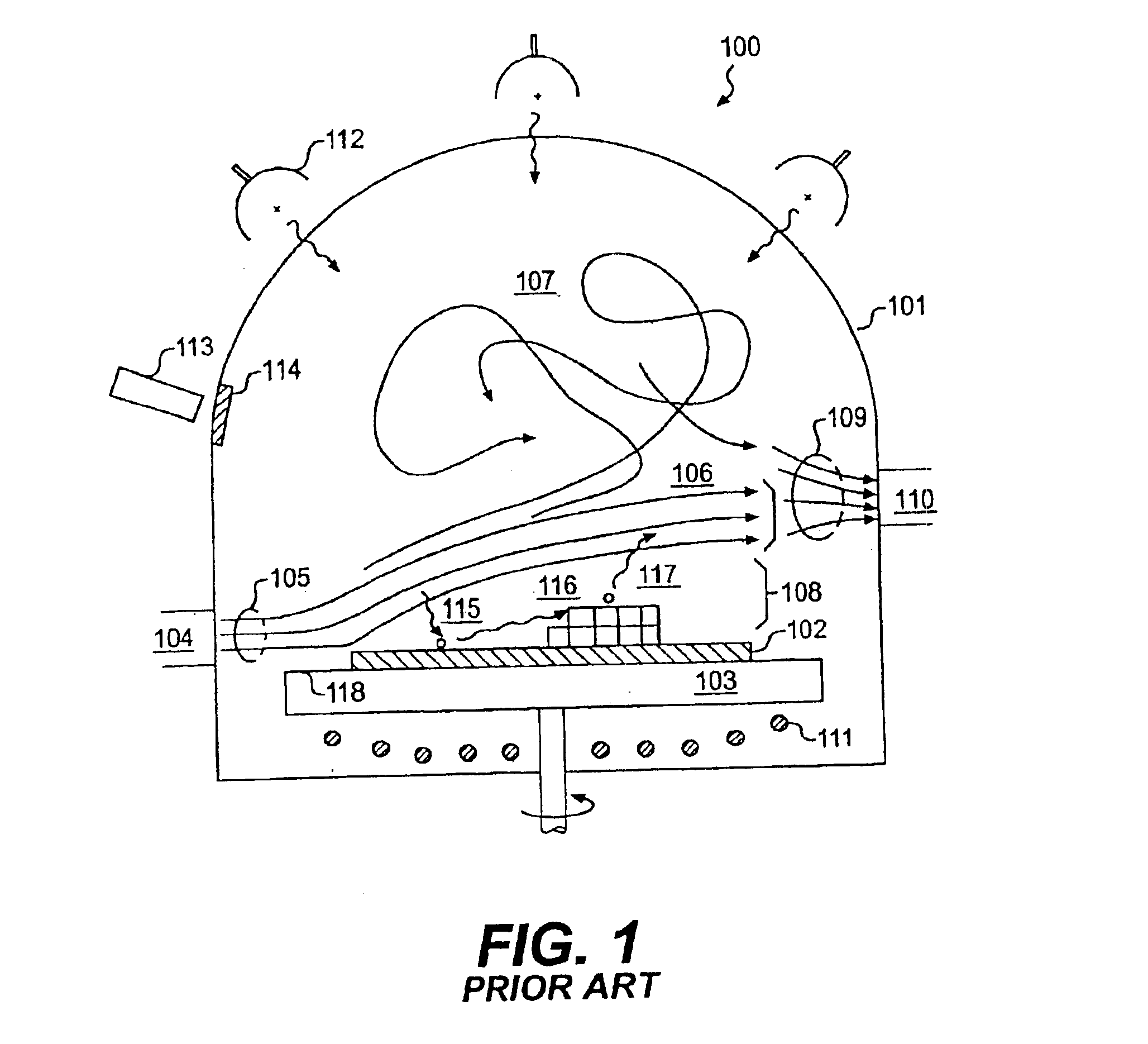Systems and methods for epitaxially depositing films on a semiconductor substrate
a technology of epitaxial depositing and semiconductor substrates, applied in the direction of chemically reactive gases, coatings, crystal growth processes, etc., can solve the problems of increasing the difficulty of maintaining the necessary level of control, increasing the difficulty of conventional epitaxial depositing approaches reducing the difficulty and risk of lifting pin breakage, and reducing the amount of time required
- Summary
- Abstract
- Description
- Claims
- Application Information
AI Technical Summary
Benefits of technology
Problems solved by technology
Method used
Image
Examples
Embodiment Construction
[0040]Aspects of the present invention provide improved systems and methods for processing semiconductor substrates. An exemplary embodiment of the present invention provides a stable, hot-walled thermal environment for epitaxial or potentially any other thermal CVD deposition on semiconductor wafers. An insulated processing cavity is formed from opaque quartz walls and a rotating susceptor and may enclose or be surrounded by a resistive heating system. The walls thermally insulate the processing cavity from the cooler surrounding environment and provide a relatively uniform and stable thermal processing environment. The processing environment may also be maintained at vacuum pressure to increase insulation and the stability of the thermal environment. Wafers are inserted through a narrow slot into the processing environment and onto pins which lower the wafer on the heated susceptor. The wafer is rotated on a susceptor and a silicon deposing gas is flowed across the surface of the ...
PUM
| Property | Measurement | Unit |
|---|---|---|
| Temperature | aaaaa | aaaaa |
| Flow rate | aaaaa | aaaaa |
| Concentration | aaaaa | aaaaa |
Abstract
Description
Claims
Application Information
 Login to View More
Login to View More - R&D
- Intellectual Property
- Life Sciences
- Materials
- Tech Scout
- Unparalleled Data Quality
- Higher Quality Content
- 60% Fewer Hallucinations
Browse by: Latest US Patents, China's latest patents, Technical Efficacy Thesaurus, Application Domain, Technology Topic, Popular Technical Reports.
© 2025 PatSnap. All rights reserved.Legal|Privacy policy|Modern Slavery Act Transparency Statement|Sitemap|About US| Contact US: help@patsnap.com



